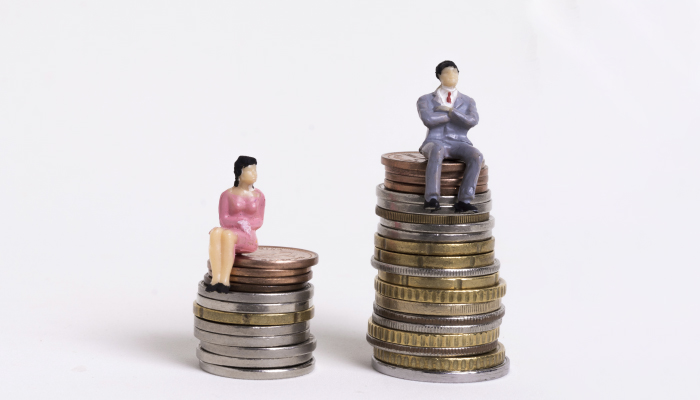Gender Inequality in Indonesia: Facts and Legal Analysis
Main Article Content
Abstract
the present time, the law is still considered discriminatory and not gender-just. Whereas the law should not regard gender to guarantee the fulfillment of women's rights. Women's rights are still not protected. Equality and elimination of discrimination against women are often the center of attention and a shared commitment to implement them. However, in social life, the achievement of equality of women's dignity still has not shown significant progress. So, if there is discrimination against women, it is a violation of women's rights. Women's rights violations occur because of many things, including the result of the legal system, where women become victims of the system. Many women's rights to work still have a lot of conflict about the role of women in the public sector. Today, discrimination against women is still very visible in the world of work. There are so many women who do not get the right to work. This research found that the structure of the company, rarely do we see women who get a place as a leader, in addition to the acceptance of female workers companies put many terms, such as looking attractive, not married, must stay in dormitory and so forth. Their salaries are sometimes different from male workers. Like male workers, women workers also have equal opportunities in the world of work. While there are many legislations governing the rights of women workers, it seems that many companies deliberately do not socialize it and even ignore the legislation just like that.
Article Details

This work is licensed under a Creative Commons Attribution-ShareAlike 4.0 International License.
All writings published in this journal are personal views of the authors and do not represent the views of this journal and the author's affiliated institutions. Author(s) are retain the copyrights of the Article. However, before publishing, it is required to obtain written confirmation from Author(s) in order to ensure the originality (Author Statement of Originality). The statement is to be signed by at least one of the authors who have obtained the assent of the co-author(s) where applicable.This work licensed under a Creative Commons Attribution-ShareAlike 4.0 International (CC BY-SA 4.0)
References
Huda, N., Rasyid, A. A., Suyata, P., & Sumarno, S. (2013). Pengembangan Model Penelitian Perspektif Gender. Jurnal Penelitian dan Evaluasi Pendidikan, 17(2), 309-310.
Jauhola, M. (2010). “When House Becomes Home”—Reading Normativity in Gender Equality Advocacy in Post-tsunami Aceh, Indonesia. Gender, Technology and Development, 14(2), 173-195.
Kania, D. (2015). Hak Asasi Perempuan dalam Peraturan Perundang-undangan di Indonesia. Jurnal Konstitusi, 12(4), 717-734.
Kementerian Pemberdayaan Perempuan. (2001). Konsep-Konsep Dasar untuk Pengarusutaman Gender. Jakarta: Kementerian Pemberdayaan Perempuan.
Kementrian Pemberdayaan Perempuan dan Perlindungan Anak (KPPA). (2011). “Konsep dan Definisi Perlindungan Perempuan dan Anak”, Online, retrieved from http://menegpp.go.id.
Khotimah, K. (2009). Diskriminasi Gender terhadap Perempuan dalam Sektor Pekerjaan. Yinyang: Jurnal Studi Islam Gender dan Anak, 4(1), 158-180.
Larasati, A. M., & Ayu, N. P. (2020). The Education for Gender Equality and Human Rights in Indonesia: Contemporary Issues and Controversial Problems. The Indonesian Journal of International Clinical Legal Education, 2(1), 73-84.
Luhulima, A. S. (2014). CEDAW: Menegakkan Hak Asasi Perempuan. Jakarta: Yayasan Pustaka Obor Indonesia.
Prantiasih, A. (2012). Hak Asasi Manusia Bagi Perempuan. Jurnal Pendidikan Pancasila dan Kewarganegaraan, 25(1), 10-15.
Prasisca, Y., & Sutikno, F. R. (2015). Gender equality and social capital as rural development indicators in Indonesia (case: malang regency, Indonesia). Procedia-Social and Behavioral Sciences, 211, 370-374.
Suryadi, A. (2001). Analisis Gender dalam Pembangunan Pendidikan. Jakarta: Bappenas & WSPII-CIDA
Suryadi, A., & Ecep, I. (2004). Kesetaraan Gender dalam Bidang Pendidikan. Bandung: PT.Ganesindo
Todaro, M. P., & Smith, S. C. (2006). Pembangunan Ekonomi. Jakarta: Erlangga.
United Nations. (1979). Convention on the Elimination of All Forms of Discrimination Againts Women (CEDAW) 1979. Available online at https://www.ohchr.org/en/professionalinterest/pages/cedaw.aspx
Wibowo, D. E. (2011). Peran Ganda Perempuan dan Kesetaraan Gender. Jurnal Muwâzâh, 13(1), 357-364.
World Health Organization (WHO). (2012). “What Do We Mean By Sex and Gender?”, Online, retrieved from www.who.int/gender/whatisgender.
Zulaiha, E., & Mutaqin, A. Z. (2021). The Problems of The Marriage Age Changing in Indonesia in the Perspectives of Muslim Jurists and Gender Equality. Hanifiya: Jurnal Studi Agama-Agama, 4(2), 99-18.
